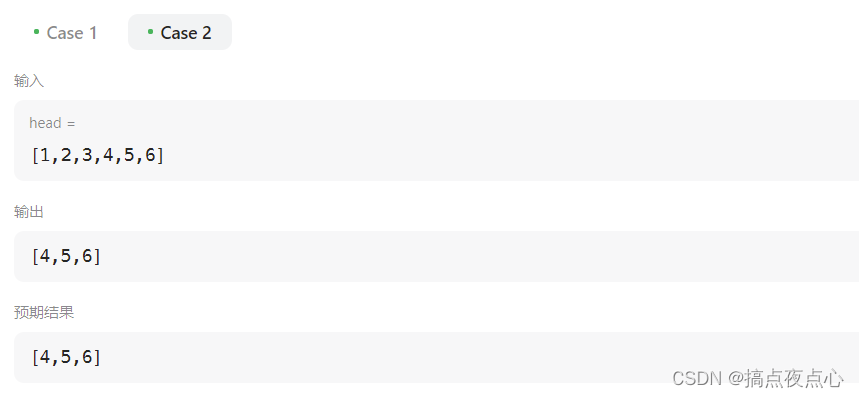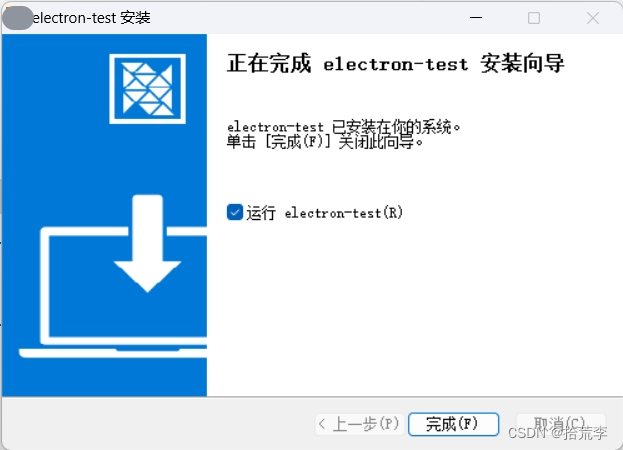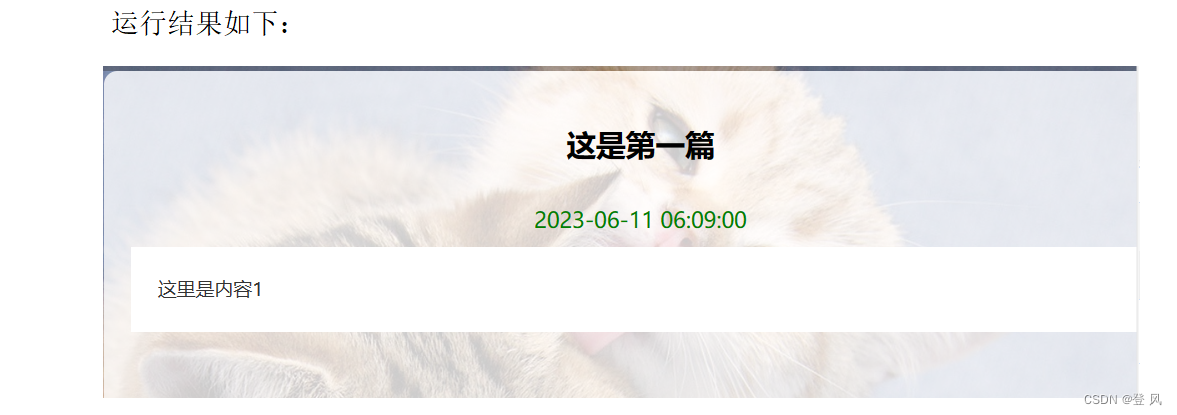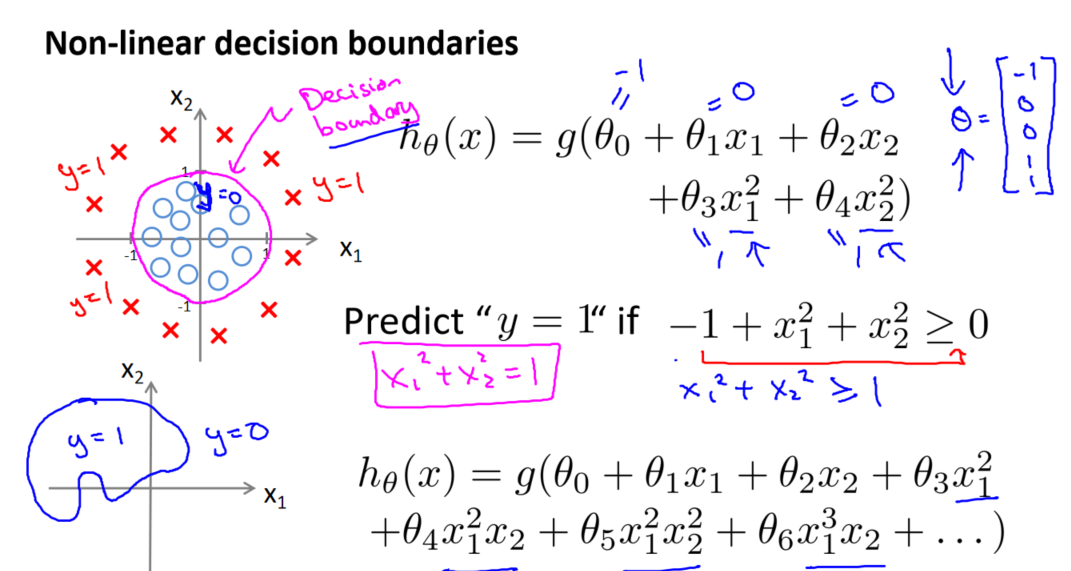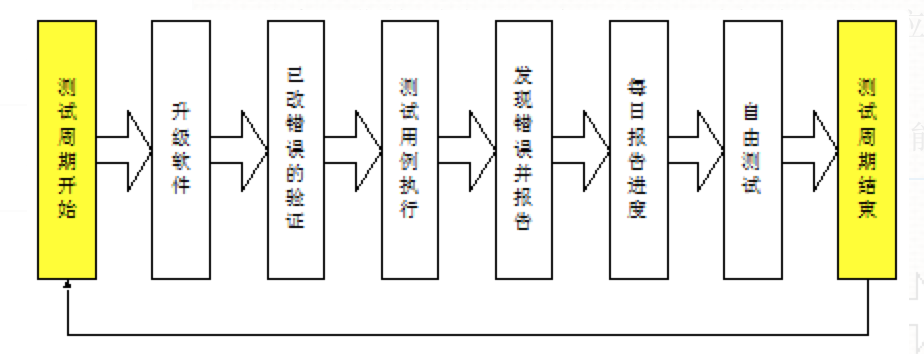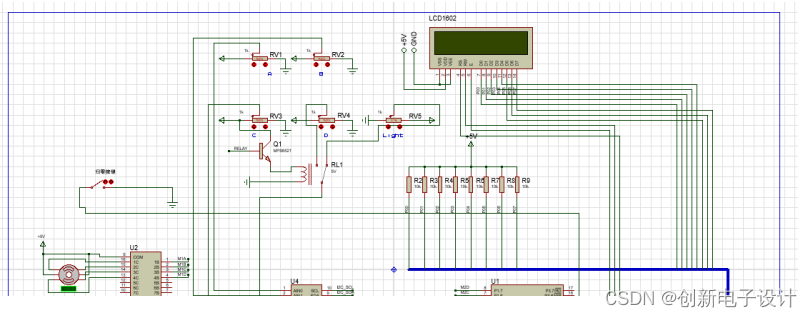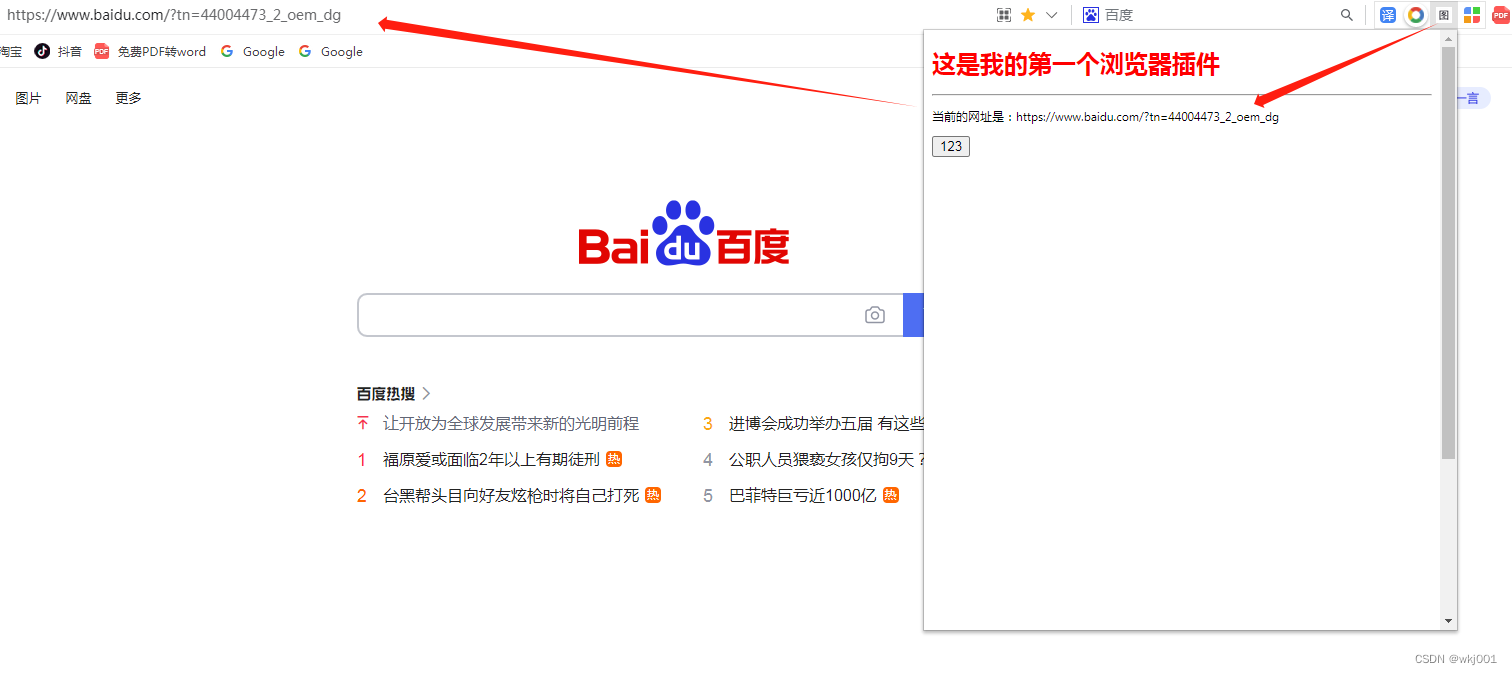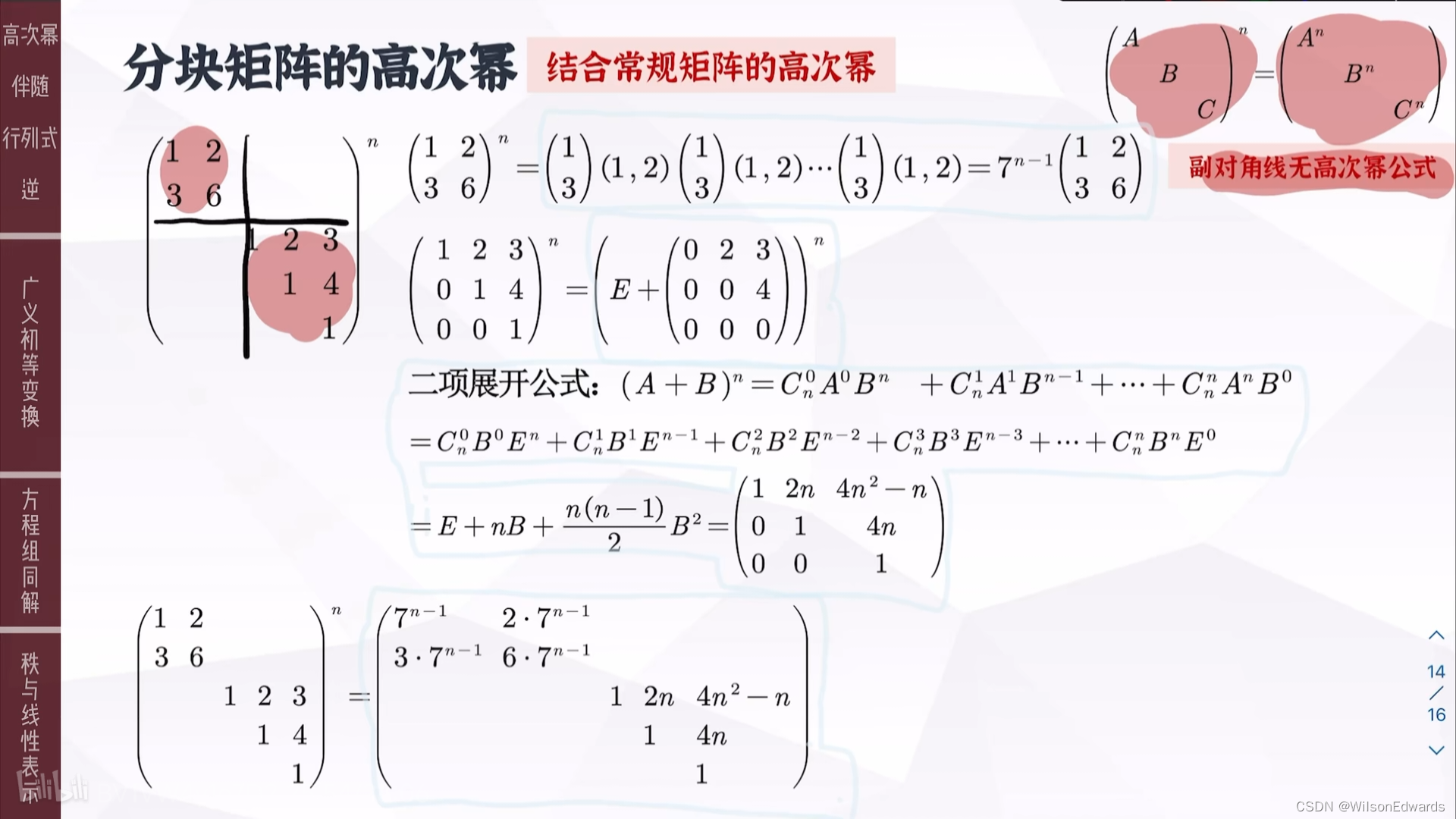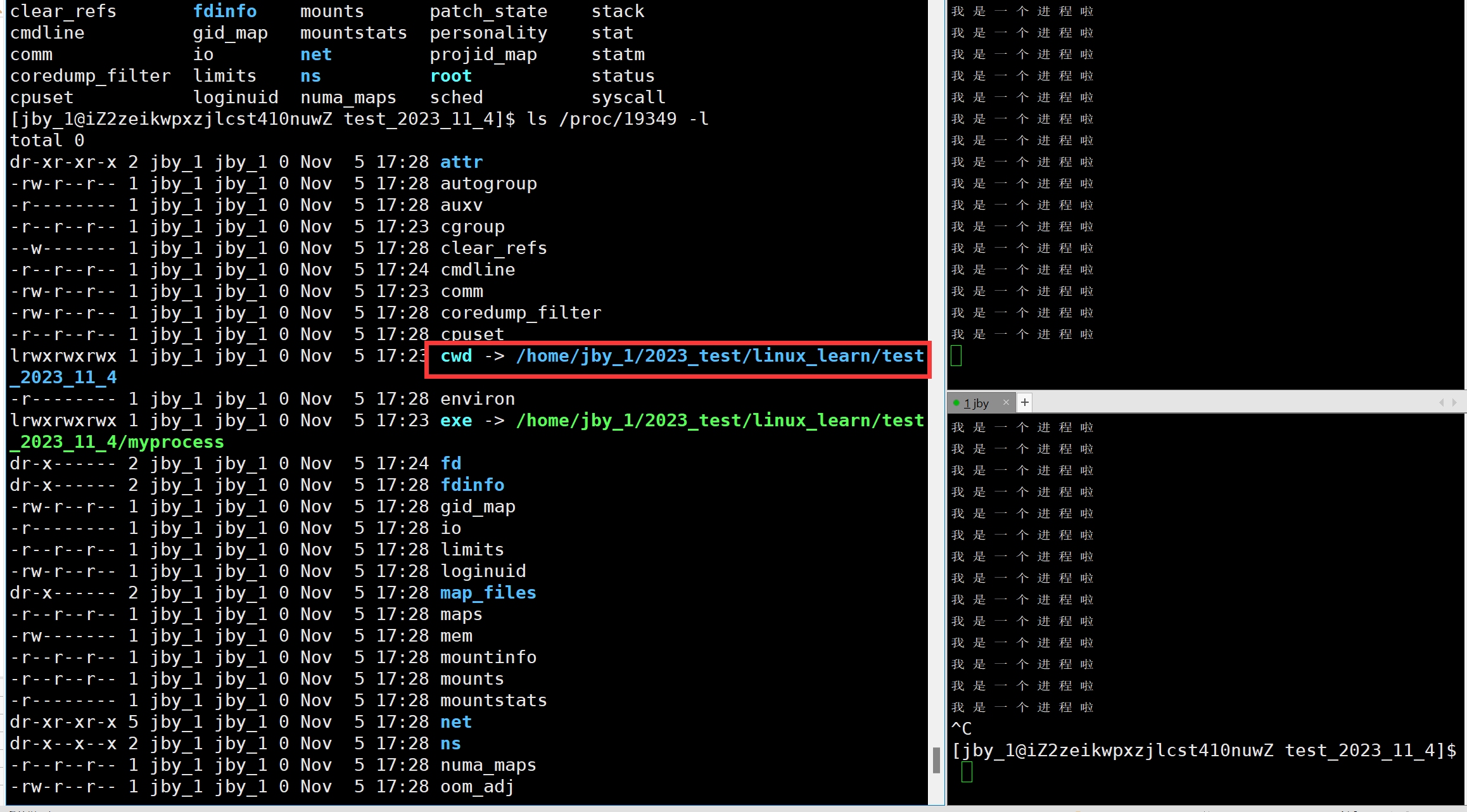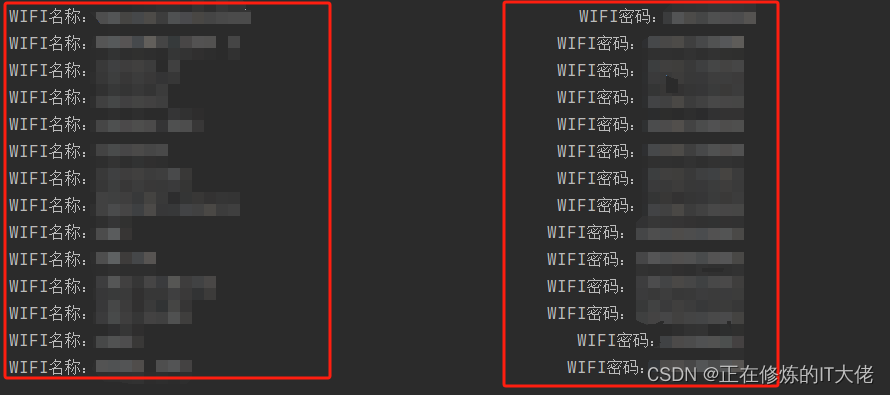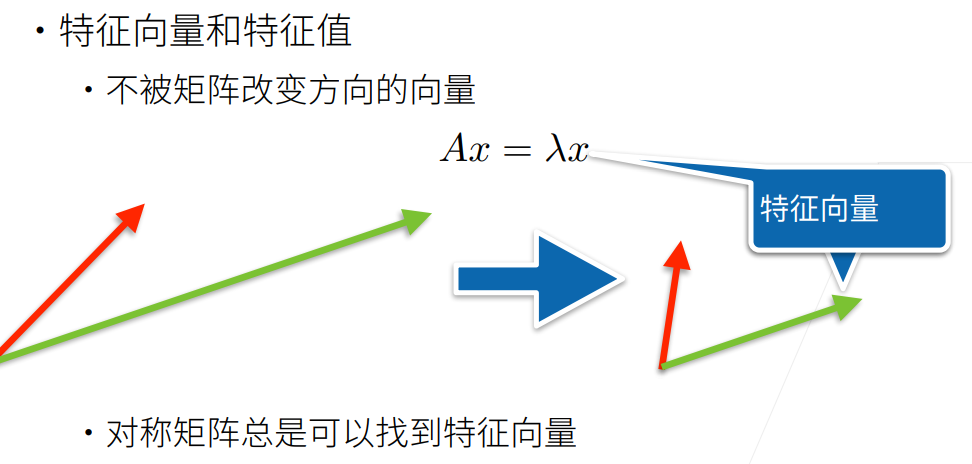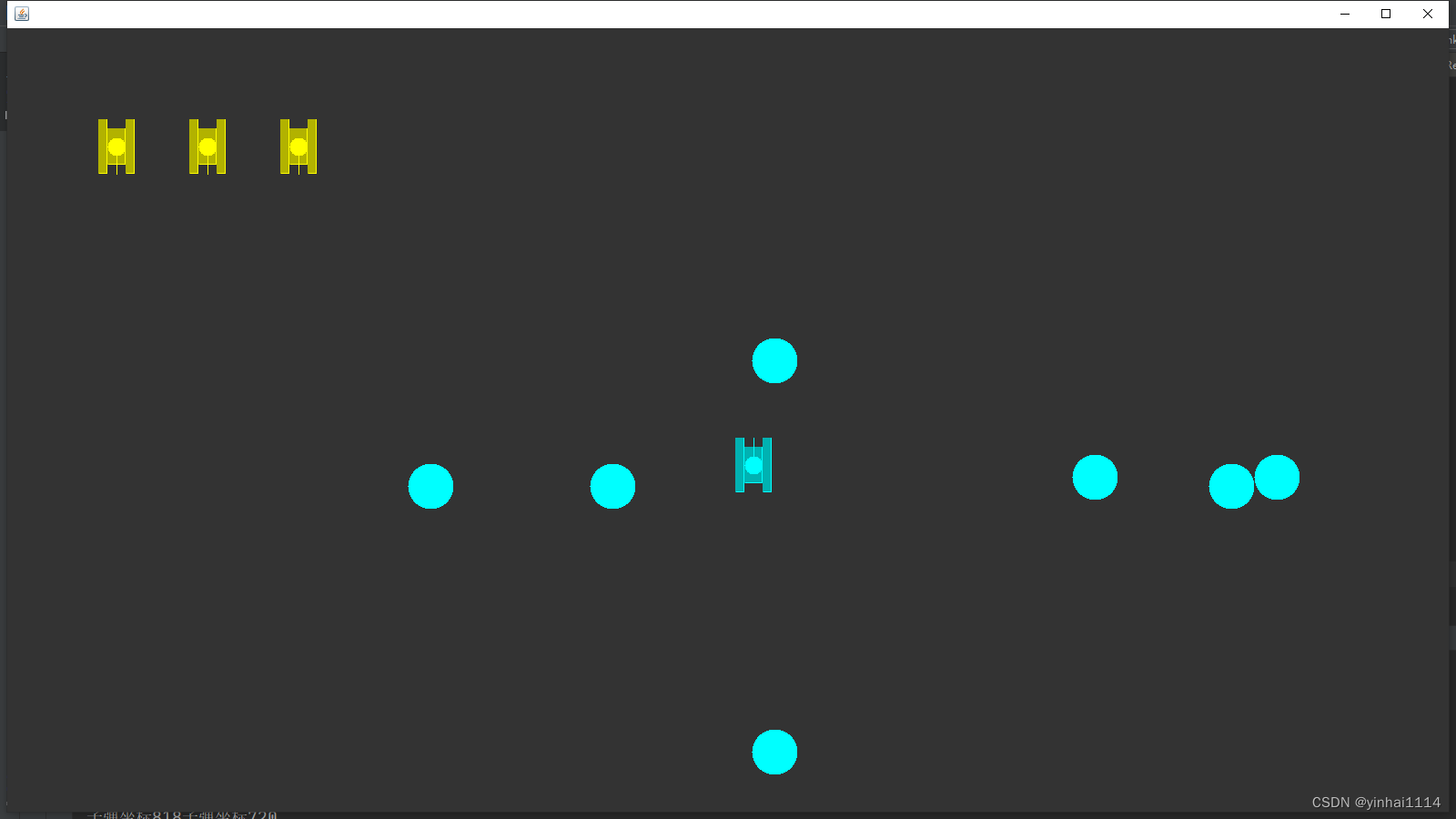移除链表元素
给你一个链表的头节点 head 和一个整数 val ,请你删除链表中所有满足 Node.val == val 的节点,并返回 新的头节点 。

思路:(1)创建三个结构体指针,分别代表一条新链表的头newhead,一条新链表的尾newtail,还有一个用于循环旧链表的pcur
(2)循环旧链表,当pcur的val不等于函数参数中的val时:1.当新链表为空时,将新链表的newhead和newtail赋值为pcur 2.当新链表不为空时,newtail的next指向pcur,newtail赋值为newtial的next;
(3)运行完一个结点pcur赋值为pcur的next
(4)当运行结束时,代表旧链表运行完毕,当最后一个结点等于val时,newtail的值不会是空,而是旧链表最后一个结点的值,因此我们需要进行判断,当newtail不为空时,需要将newtail置空,最后返回newhead即可
struct ListNode* removeElements(struct ListNode* head, int val)
{
struct ListNode* newhead=NULL;
struct ListNode* newtail=NULL;
struct ListNode* pcur=head;
while(pcur)
{
if(pcur->val != val)
{
if(newhead == NULL)
{
newhead=newtail=pcur;
}
else
{
newtail->next=pcur;
newtail=newtail->next;
}
}
pcur=pcur->next;
}
if(newtail)
{
newtail->next=NULL;
}
return newhead;
}

反转链表
给你单链表的头节点 head ,请你反转链表,并返回反转后的链表。

思路:(1)若链表为空,则直接返回空
(2)若不为空,创建三个结构体指针分别为n1,n2,n3,将n1赋值为NULL,n2赋值为head,n3赋值为head->next
(3)以n2为循环条件进行遍历,每次运行都将n2的next赋值为n1,n1赋值为n2,n2赋值为n3,若n3不为空则n3赋值为n3的next(下图为第一次和第二次循环图)
(4)又因为n2和n3最后的位置都为NULL,所以最后返回n1即可。
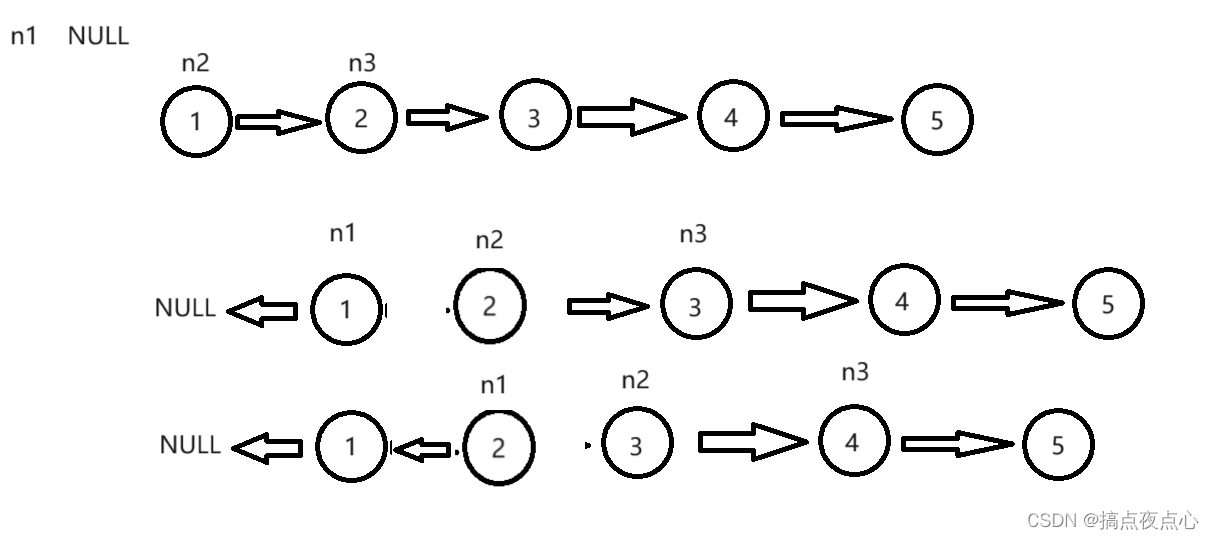
struct ListNode* reverseList(struct ListNode* head)
{
if(head==NULL)
{
return NULL;
}
struct ListNode* n1=NULL;
struct ListNode* n2=head;
struct ListNode* n3=head->next;
while(n2)
{
n2->next=n1;
n1=n2;
n2=n3;
if(n3)
{
n3=n3->next;
}
}
return n1;
}

合并两个有序链表
将两个升序链表合并为一个新的升序链表并返回。新链表是通过拼接给定的两个链表的所有节点组成的。
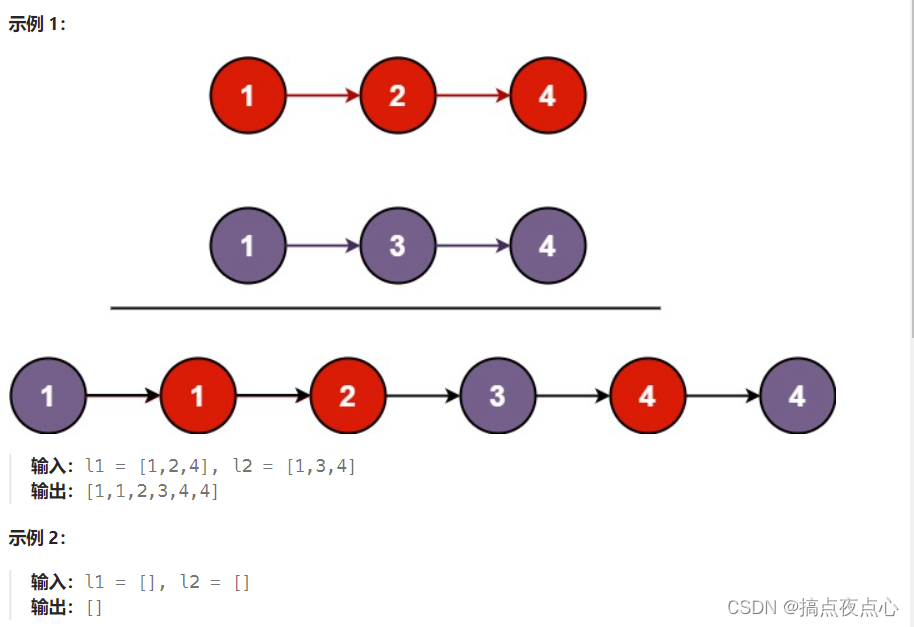
思路:(1)判断传入的参数list1、list2是否为空,为空则返回另一个
(2)创建四个结构体指针,newhead代表新链表的头,newtail代表新链表的尾,pcur1和pcur2分别用来遍历list1和list2
(3)若pcur1和pcur2都不为空则进入循环,当pcur1的val大于pcur2的val,判断newhead是否为空,为空则将newhead和newtail赋值为pcur1,不为空则进行新链表结点的插入,即将newtail的next赋值为pcur1,newtail赋值为newtail的next;pcur1小于等于pcur2时同理,只需将pcur1改为pcur2即可
(4)当循环结束,判断pcur1与pcur2是否为空,某个不为空时,将newtail的next赋值为不为空的pcur,最后返回newhead即可
- 不带头单向不循环链表
//不带头单向不循环链表
struct ListNode* mergeTwoLists(struct ListNode* list1, struct ListNode* list2)
{
if(list1 == NULL)
{
return list2;
}
if(list2 == NULL)
{
return list1;
}
struct ListNode* newhead=NULL;
struct ListNode* newtail=NULL;
struct ListNode* pcur1=list1;
struct ListNode* pcur2=list2;
while(pcur1 && pcur2)
{
if((pcur1->val) < (pcur2->val))
{
if(newhead == NULL)
{
newhead=newtail=pcur1;
}
else
{
newtail->next=pcur1;
newtail=newtail->next;
}
pcur1=pcur1->next;
}
else
{
if(newhead == NULL)
{
newhead=newtail=pcur2;
}
else
{
newtail->next=pcur2;
newtail=newtail->next;
}
pcur2=pcur2->next;
}
}
if(pcur1 != NULL)
{
newtail->next=pcur1;
}
if(pcur2 != NULL)
{
newtail->next=pcur2;
}
return newhead;
}
- 带头单向不循环链表
思路:(1)newhead和newtail的初始值不再是NULL,而是一个没有val值的结点,相当于是一个哨兵位。因此就不再需要判断newhead是否为空。
(2)最后需要将malloc的newhead指针释放,需要创捷一个新结构体指针rehead赋值为newhead的next,便可进行newhead的释放,最后返回rehead即可
struct ListNode* mergeTwoLists(struct ListNode* list1, struct ListNode* list2)
{
if(list1 == NULL)
{
return list2;
}
if(list2 == NULL)
{
return list1;
}
struct ListNode* newhead=(struct ListNode*)malloc(sizeof(struct ListNode));
struct ListNode* newtail=newhead;
struct ListNode* pcur1=list1;
struct ListNode* pcur2=list2;
while(pcur1 && pcur2)
{
if((pcur1->val) < (pcur2->val))
{
newtail->next=pcur1;
newtail=newtail->next;
pcur1=pcur1->next;
}
else
{
newtail->next=pcur2;
newtail=newtail->next;
pcur2=pcur2->next;
}
}
if(pcur1 != NULL)
{
newtail->next=pcur1;
}
if(pcur2 != NULL)
{
newtail->next=pcur2;
}
struct ListNode* rehead=newhead->next;
free(newhead);
newhead=NULL;
return rehead;
}
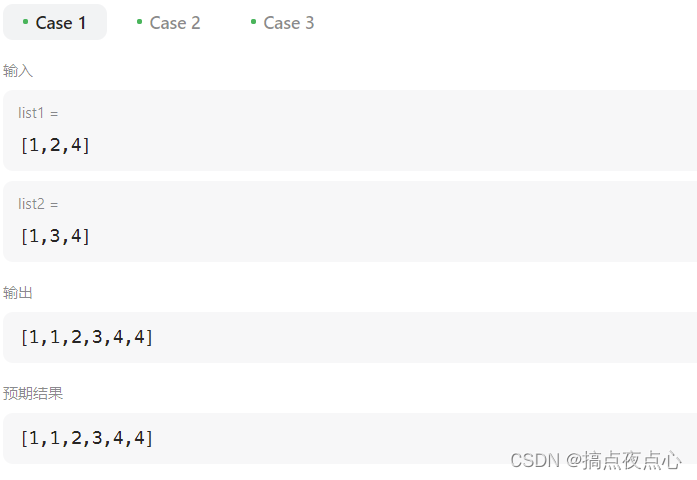
链表的中间结点
给你单链表的头结点 head ,请你找出并返回链表的中间结点。
如果有两个中间结点,则返回第二个中间结点。

思路:(1)运用快慢指针,创建两个结构体指针,分别为slow和fast,slow每次走一个结点,fast每次走两个结点(如下图)
(2)返回slow指针即可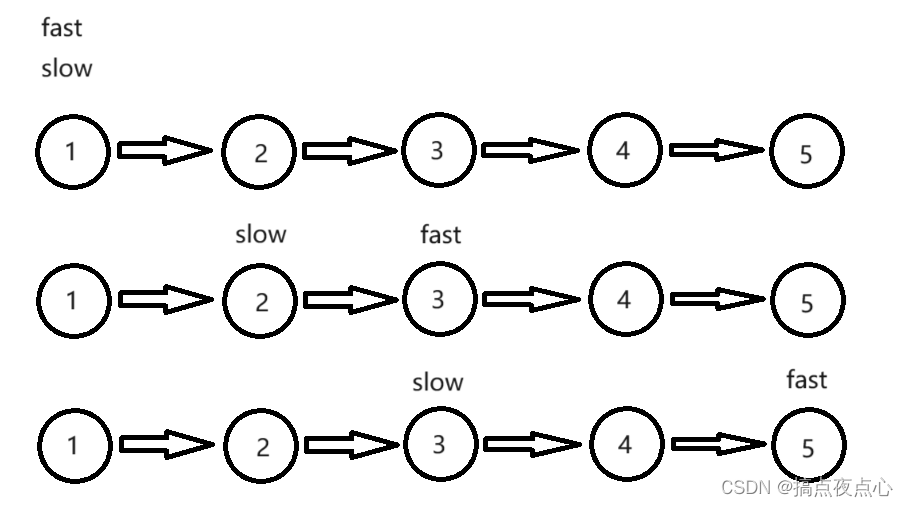
struct ListNode* middleNode(struct ListNode* head)
{
struct ListNode* fast=head;
struct ListNode* slow=head;
while(fast && fast->next)
{
slow=slow->next;
fast=fast->next->next;
}
return slow;
}
